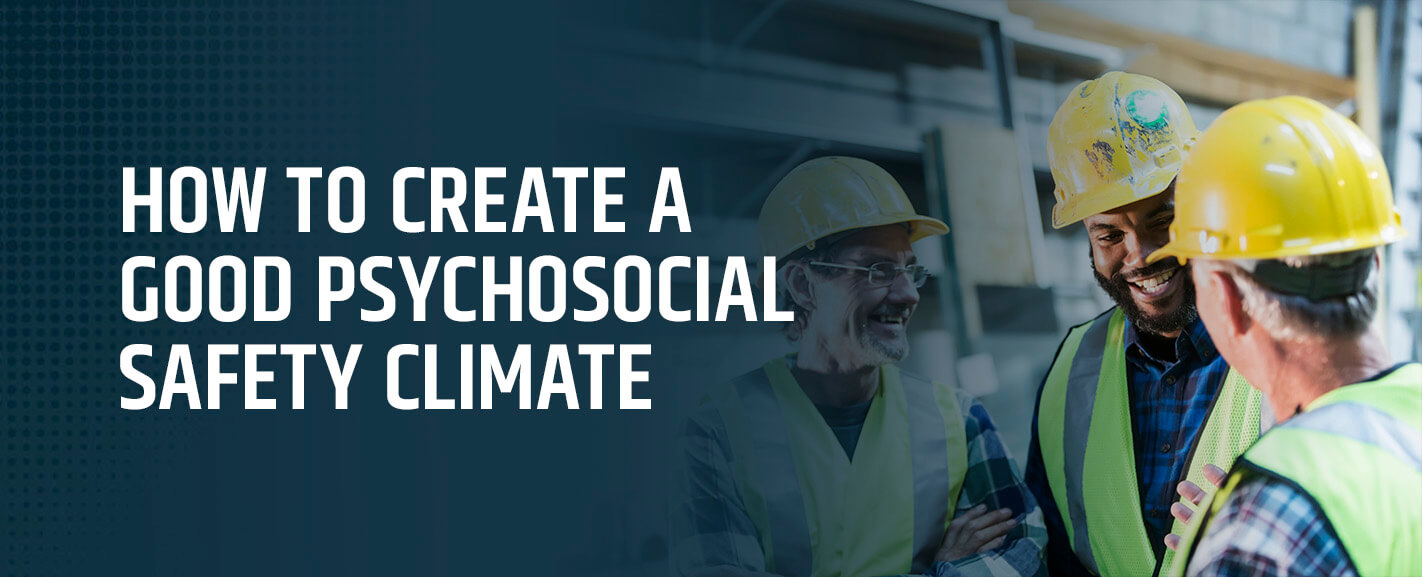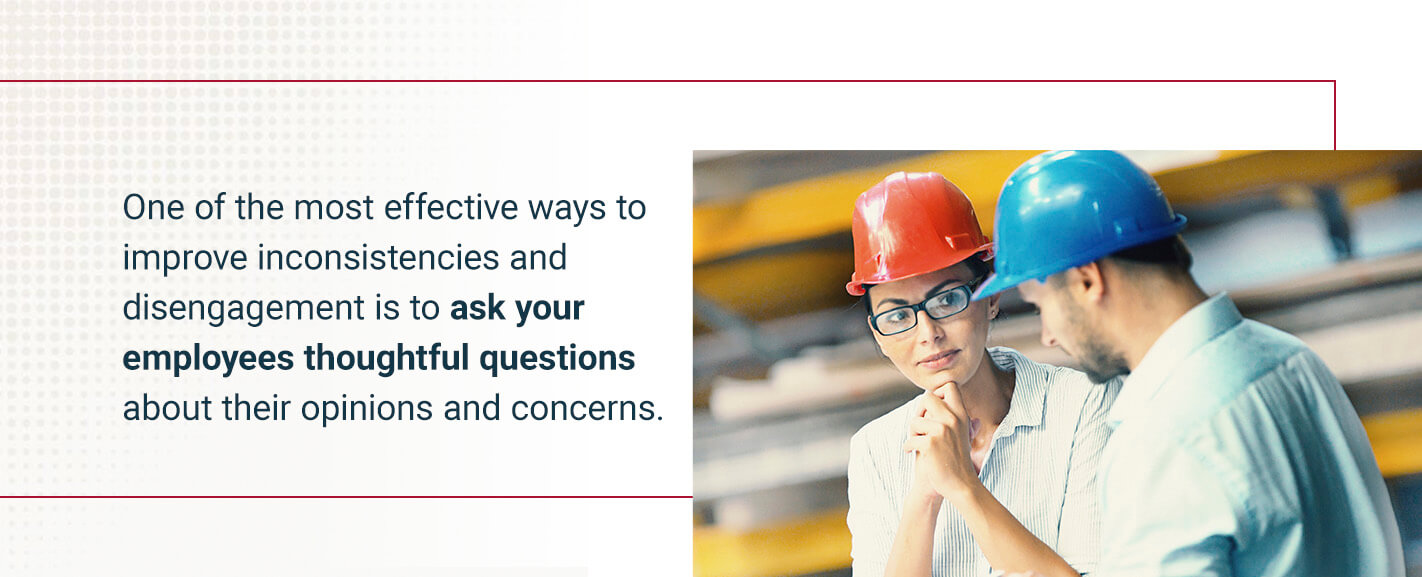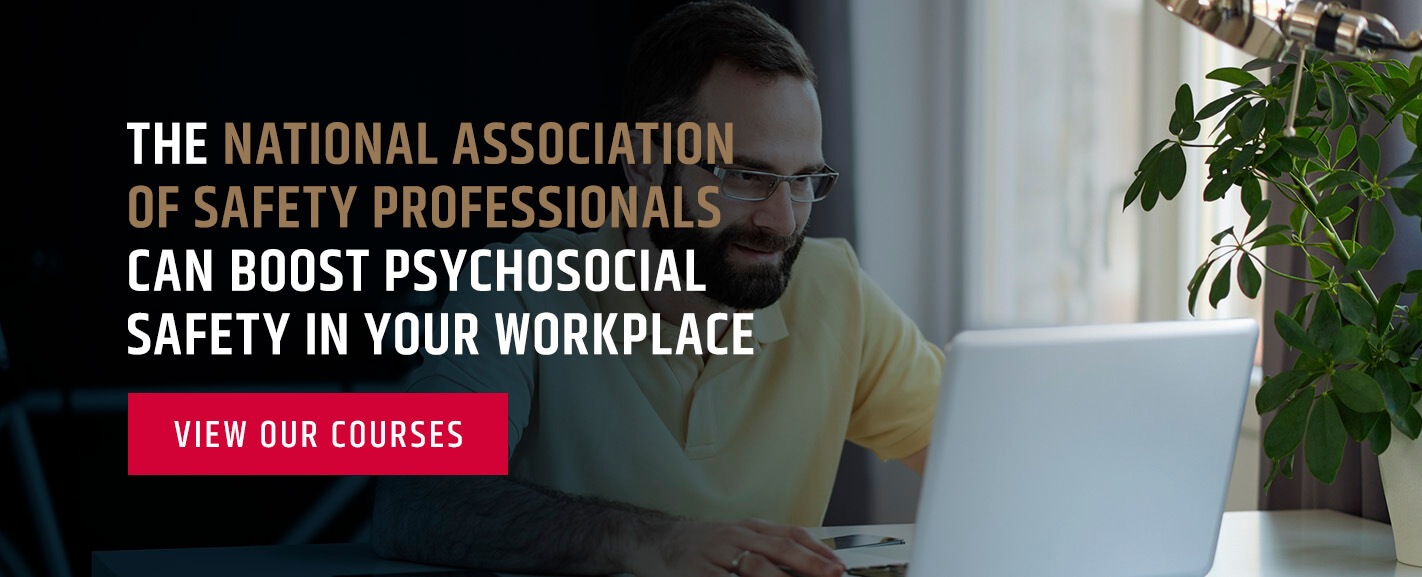How to Create a Good Psychosocial Safety Climate

As an Environmental, Health, and Safety (EHS) professional, you know how important it is for employees to have a positive, supportive work environment. Ensuring everyone within your organization feels confident in voicing their opinions, questions, and ideas is critical. Employees who experience poor psychosocial safety don’t feel supported, respected, or valued in their job. These feelings can lead to low productivity, high turnover, and several mental health concerns.
Psychosocial safety is just as vital as physical safety to caring for your team and promoting a better working environment. In this article, we’ll cover how to create a good psychosocial safety climate with some specific tools you can implement.
What Is Psychosocial Safety?
Psychosocial safety is a way of prioritizing employees’ psychological and mental health. This managerial practice incorporates critical aspects of psychology and sociology into business procedures, policies, and practices to protect workers’ health and help them feel safe in the workplace.
Psychosocial safety also supports work-life balance and low-stress work environments. It encourages employees to share their ideas, concerns, questions and mistakes with leaders without fearing punishment or embarrassment. Feeling that they’re allowed to speak up at work can increase employees’ productivity and mental and emotional health.
Psychosocial safety is a vital factor for high-performing organizations. Teams are less afraid of consequences that may result from:
- Sharing opinions.
- Making suggestions.
- Being candid.
- Making mistakes.
- Taking calculated risks.
With a supportive environment, employees are more likely to take the initiative when it matters most and effectively communicate in the process.
Why Having a Good Psychosocial Safety Climate Is Important
In addition to supporting your employee’s mental health, cultivating a good psychosocial safety climate can impact your organization’s bottom line. Psychosocial safety also empowers your teams and encourages them to contribute and participate in your organization’s success.
For example, psychosocial safety helps employees feel empowered to share their perspectives when they differ from the majority. When they do, your business can fully leverage the unique skills and knowledge each employee brings to the team. Encouraging every team member to think creatively and find unique solutions allows your organization to become more innovative, competitive, and cohesive.
Fostering a positive psychosocial work environment can also directly improve your employees’ experiences. Happy employees lead to higher retention and equip your business with the tools it needs to prevent failure.
Consequences of a Poor Psychosocial Safety Climate
Managing psychosocial safety helps prevent the occurrence of psychosocial hazards. A psychosocial hazard is an event, environment, or anything else that could harm someone’s mental health and lead to excessive stress. Some examples include:
- Ineffective or infrequent communication.
- Bullying in the workplace.
- Conflicting job role demands.
- Excessive workloads.
- Vague job role clarity.
- Sexual or psychological harassment.
- Minimal or no employee recognition or reward.
- Minimal or no support from management teams.
- Insufficient involvement in employee well-being.
- Poor management practices that lead to job insecurity.
If left unaddressed, these psychosocial hazards can lead to detrimental consequences for your employees and even their loved ones, including the following:
- Burnout
- Depression
- Anxiety
- Anger
- Fatigue
- Injury
- Post-traumatic stress disorder (PTSD)
- Low employee satisfaction
- Turnover
You may be able to mitigate these hazards by removing certain stressors, improving communication, or asking for direct feedback on how to help your employees feel appreciated and supported. In more extreme cases, you may need to make drastic changes like relocating employees, getting professional help, or restructuring your business processes.
How to Create a Climate of Psychosocial Safety in the Workplace
Methods for improving psychosocial safety in the workplace range from simple, everyday changes to learning how to manage various regulations, programs, and plans more effectively. Let’s dive deeper into some strategies you can use to transform your team environment and support your employees’ mental health.
1. Promote Self-Awareness and Trust
Making organizational changes starts with establishing trust and self-awareness across the board, from your management team to your newest employees. When you and other safety managers recognize how you think, behave, and react in a positive, healthy way, it’s easier for employees to follow suit.
Understanding emotional responses can also open the door for discussing how to improve workplace culture and listening to each other’s communication and working preferences. Extending trust and respect is an effective way to maintain these critical aspects that help you succeed.
2. Avoid Casting Blame and Own Up to Mistakes
Reflecting on your own mistakes and taking accountability can help your employees see the benefit of doing the same. Recognizing your failures and celebrating your successes can help your team members embrace learning from past mistakes without fearing punishment.
Ask your employees about a time when they feel they made a big mistake or when a task or experience did not turn out as expected. Reassure them that they won’t be punished for making mistakes and emphasize that recognizing and learning from them can improve performance and teamwork. Instead of a culture of blaming one individual for a project going wrong, you will foster a workplace that focuses on group collaboration and effort.
3. Actively Seek Questions and Feedback
One of the most effective ways to improve inconsistencies and disengagement is to ask your employees thoughtful questions about their opinions and concerns. Doing so encourages them to practice speaking up and gives them a say in your organization.
For example, when holding a meeting, ask your team members if they have different viewpoints or considerations you haven’t covered. You can prompt them to share feedback in several ways, such as in person, through email, or in an anonymous survey. As a safety or risk manager, being open to feedback and valuing others challenging your perspective is vital.
4. Promote Positive Discussions
Effective communication is key for improving many aspects of your organization and can:
- Promote employee engagement.
- Foster better professional relationships.
- Improve productivity.
- Build trust.
- Prevent conflict.
- Provide clarity and direction.
If you already have regular meetings with your team, reflect on these discussions and determine if they are positive, productive, and beneficial for all team members. For example, do you openly discuss opportunities for improvement? Are you and other team members open-minded and compassionate toward others? Do you thoroughly explain policy changes and new information? You can empower your employees with a positive mindset toward speaking up in these small ways.
5. Show Your Appreciation
Employee recognition goes a long way toward making your team members feel welcome and respected. If you want to establish a more positive work environment, it’s critical to celebrate every employee and thank them for their daily contributions to your organization.
You can make your team members feel that they matter with something as simple as:
- Creating an employee of the month program.
- Sending out an email to praise an individual for their creative solution.
- Thanking everyone who speaks up in a meeting.
6. Implement Workplace Safety Training
Sometimes, making a top-down organizational change requires a greater focus on building a safety culture in the workplace. If you want to provide practical education on your new safety and environmental management systems, programs, and policies, consider offering training courses.
Workplace safety training lets employees earn certificates in various competencies necessary for a safe and healthy work environment. This ongoing education also provides professional development and allows employees to maintain their credentials, helping them progress in their careers.
The National Association of Safety Professionals Can Boost Psychosocial Safety in Your Workplace
Caring for your employees’ psychosocial health can do wonders for team collaboration, productivity, and individual professional development. At NASP, we provide a practical approach to workplace safety with real-world training built by safety professionals for safety professionals.
As a leader, you can make a difference in your organization by supporting your employees with various online and live learning courses. Contact us today to learn more about protecting your employees in the workplace, or view our courses and certifications online.
Behavior Based Safety Specialist (BBS) Human and Organizational Performance (HOP) Certificate
Blog Posts
Latest Posts
Related Posts






